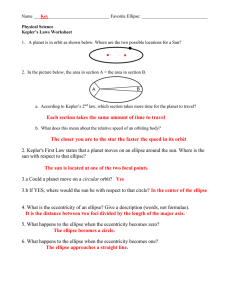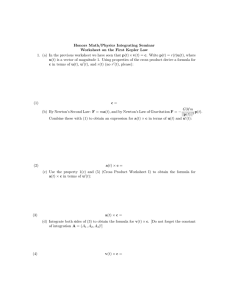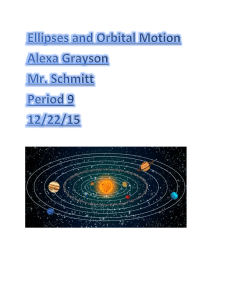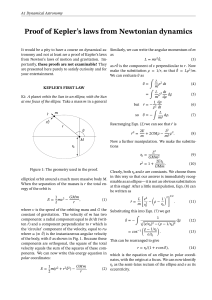Name_________________________________ Favorite Ellipse: ______________________________ Physical Science
advertisement
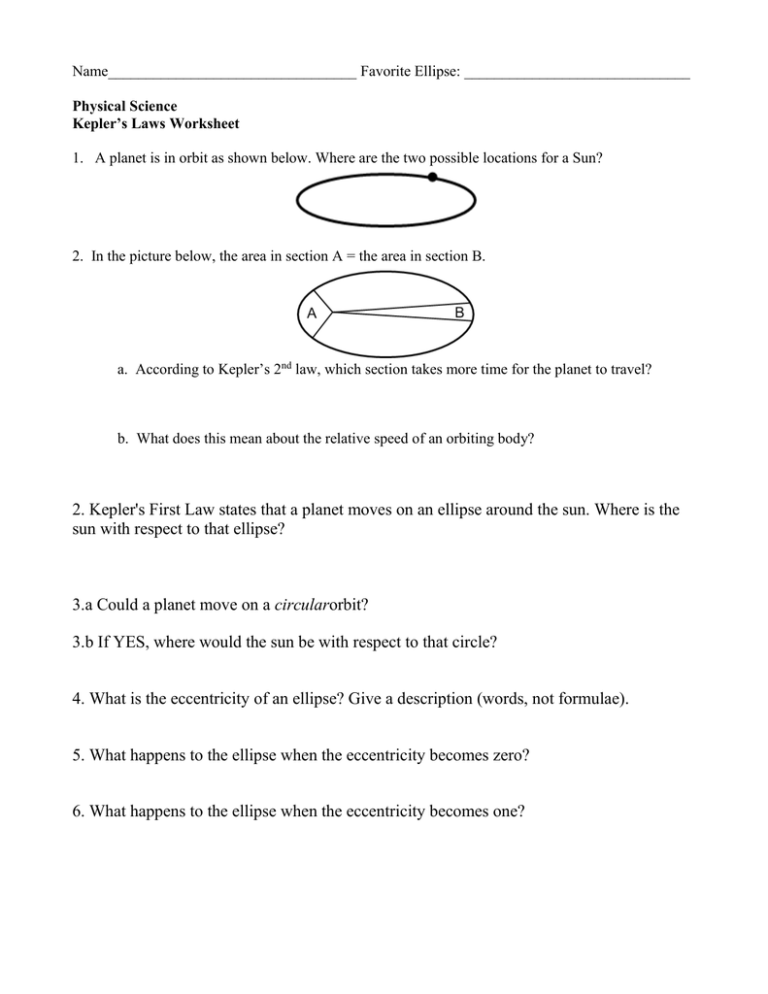
Name_________________________________ Favorite Ellipse: ______________________________ Physical Science Kepler’s Laws Worksheet 1. A planet is in orbit as shown below. Where are the two possible locations for a Sun? 2. In the picture below, the area in section A = the area in section B. a. According to Kepler’s 2nd law, which section takes more time for the planet to travel? b. What does this mean about the relative speed of an orbiting body? 2. Kepler's First Law states that a planet moves on an ellipse around the sun. Where is the sun with respect to that ellipse? 3.a Could a planet move on a circularorbit? 3.b If YES, where would the sun be with respect to that circle? 4. What is the eccentricity of an ellipse? Give a description (words, not formulae). 5. What happens to the ellipse when the eccentricity becomes zero? 6. What happens to the ellipse when the eccentricity becomes one? 7. On planet Blob the average global temperature stays exactly constant throughout the planet's year. What can you infer about the eccentricity of Blob's orbit? 8. On planet Blip the average global temperature varies dramatically over the planet's year. What can you infer about the eccentricity of Blip's orbit? 9.Use the diagram below to explain how and why a planet’s speed changes as it travels around its sun. Think about when a planet travels faster/slower in its orbit.
